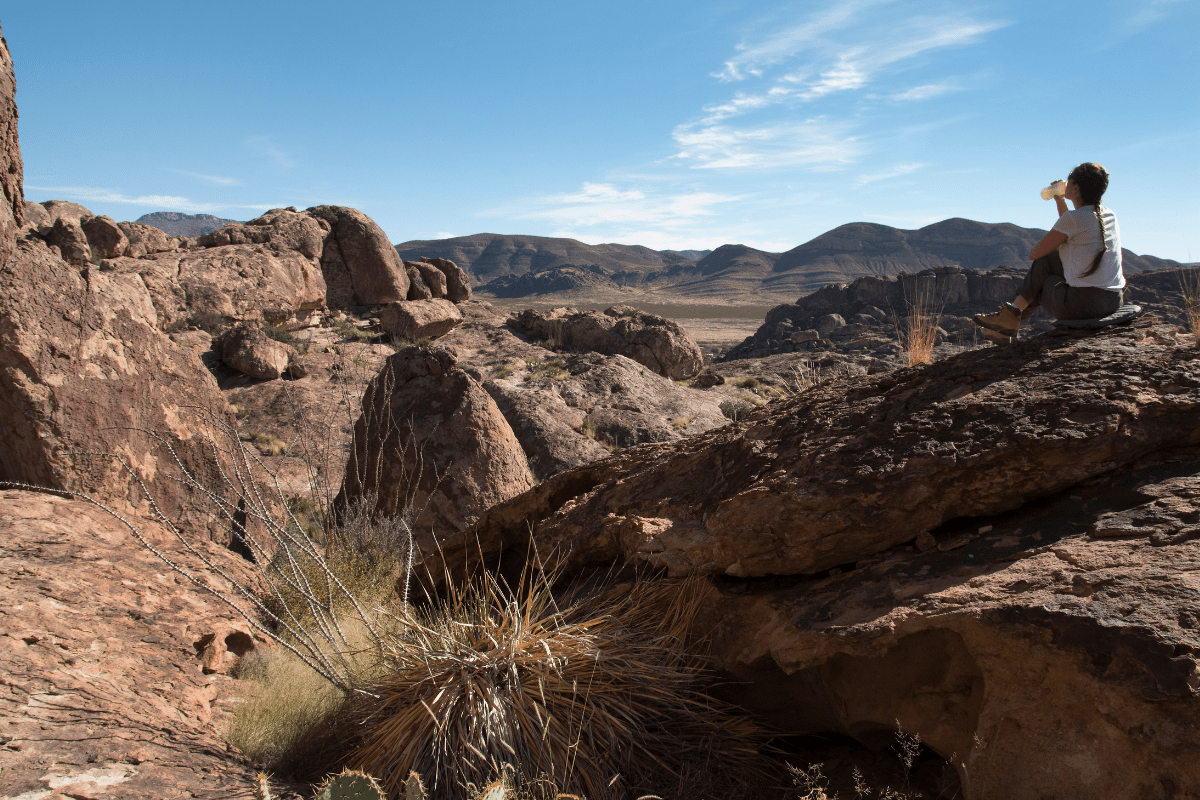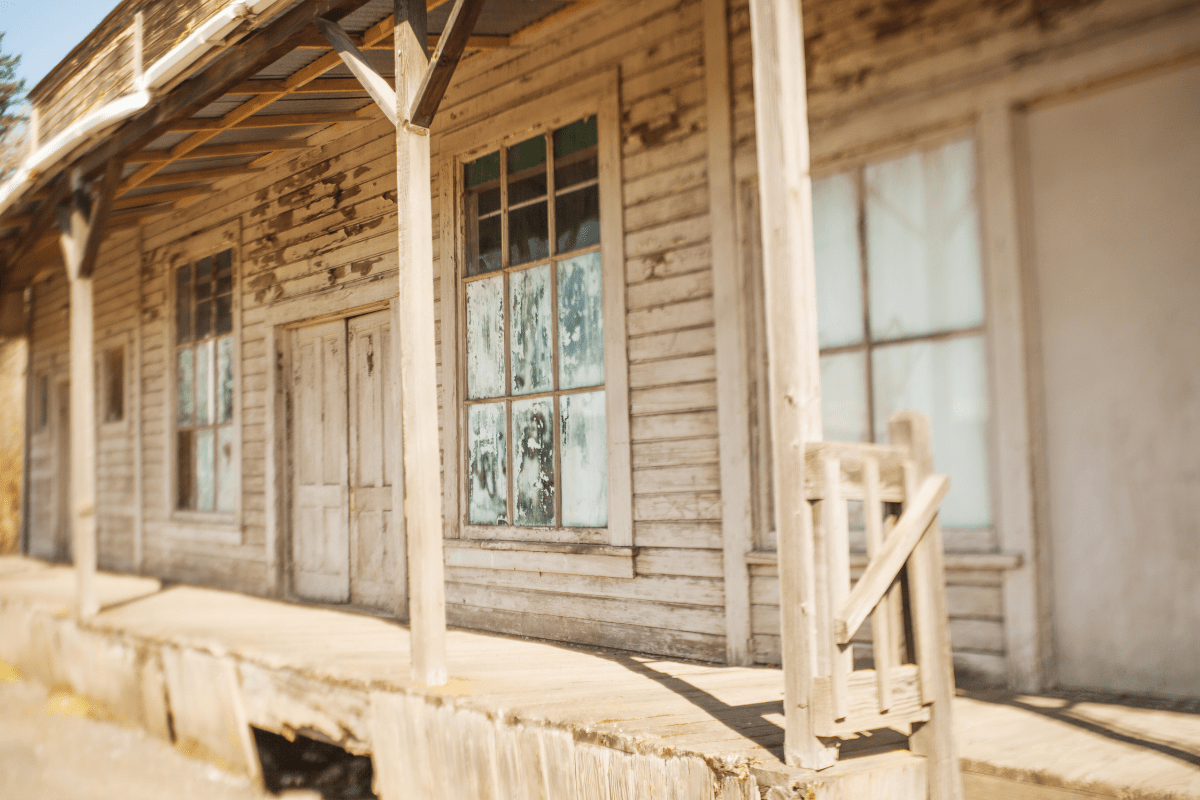Let me tell you something about Texas history… it's everywhere, and I mean that literally. From 13,000-year-old Native American quarries to gleaming presidential libraries, this state packs more historical punch per square mile than a history professor's fever dream. Whether you're the type who tears up at the Alamo or just wants some Instagram-worthy shots at a pink granite dome, I've got you covered with this ridiculously comprehensive guide to Texas's best historic sites.
The heavy hitters: Sites you've definitely heard about
Look, we need to start with the obvious ones because, honestly, they're famous for good reasons. These are the places your relatives will actually recognize when you post photos.
San Antonio Missions (aka Texas's only UNESCO World Heritage Site)
The San Antonio Missions earned their UNESCO designation in 2015, and let me be clear: this is a huge deal. We're talking about the largest collection of Spanish colonial architecture in North America, spread across a manageable 7.7-mile stretch along the San Antonio River.
Here's what makes these missions special beyond the pretty pictures. Mission San José, nicknamed the "Queen of the Missions," features this stunning Rose Window carved in 1775 that architecture nerds absolutely lose their minds over. The whole complex represents what UNESCO calls an "exceptionally inventive interchange" between indigenous peoples and Spanish colonizers… which is a fancy way of saying these buildings tell complicated, important stories about cultural collision and adaptation.
The missions attract about 1.2 million visitors annually, but here's the beautiful part: admission is completely free to all four National Park missions. Yes, you read that right. Free. The best way to see them? Either bike the 8-mile Mission Reach trail (seriously gorgeous) or hop on the VIA VIVA route #40 bus that connects all four missions. Pro tip: the ranger-led tours departing from Mission San José at 10 AM and 11 AM are limited to 50 people, first-come-first-served, so show up early if you want the full experience.
The Alamo (because obviously)
I know, I know… everyone talks about the Alamo. But with 1.6 million annual visitors, clearly people aren't tired of remembering it yet. The good news? It's also completely free to visit, and they've seriously upgraded the experience with the Phil Collins Collection. Yes, that Phil Collins. Turns out the Genesis drummer is obsessed with Texas history and donated his massive collection of Alamo artifacts.
Visit between November and April unless you enjoy melting into the sidewalk. Trust me on this one.
San Jacinto Monument: Taller than Washington's
Here's a fun fact to drop at parties: the San Jacinto Monument stands 567 feet tall, making it 15 feet taller than the Washington Monument. Take that, D.C.! This massive limestone tower marks where Sam Houston's army defeated Santa Anna in just 18 minutes on April 21, 1836, basically securing Texas independence faster than it takes to order lunch at Whataburger.
The museum costs fourteen dollars for adults and includes this dramatic 35-minute film called "Texas Forever!" that's equal parts educational and entertainingly over-the-top. If you visit during the annual San Jacinto Day festivities in April, expect crowds of 7,000 to 10,000 people who take their Texas history very, very seriously.
Presidential libraries that don't suck
I'll be honest… I used to think presidential libraries were boring. Then I actually visited these two and realized I was completely wrong.
LBJ Presidential Library in Austin
The LBJ Library houses 45 million pages of documents, which sounds overwhelming until you realize they've curated the interesting stuff into digestible exhibits. The full-scale Oval Office replica features LBJ's actual desk, and yes, you can take photos pretending to make important presidential decisions.
Here's the money-saving tip: while regular admission runs sixteen dollars for adults, the library offers nine free days annually, including LBJ's birthday on August 27. The library generates an 82 million dollar economic impact from its 100,000 annual visitors, so you'll be in good company.
George W. Bush Presidential Library in Dallas
Politics aside, this library knows how to engage visitors. They've got a 22-foot steel beam from the World Trade Center that stops people in their tracks, plus the Decision Points Theater where you can literally make presidential decisions and see how yours compare to Bush's actual choices. It's surprisingly addictive.
The library houses 70 million pages and 200 million emails (thank goodness they're searchable). Admission costs sixteen dollars for adults, but active military get in free, which is a nice touch.
Native American sites that will blow your mind
These places don't get the visitor numbers of the Alamo, but honestly? They're some of the most profound historical sites in Texas.
Alibates Flint Quarries: 13,000 years of continuous use
Near Amarillo, you'll find one of the most significant archaeological sites in North America that most Texans have never heard of. The Alibates Flint Quarries provided rainbow-hued flint that was quarried continuously for 13,000 years, from mammoth-hunting Clovis people to Plains tribes.
Here's the deal with visiting:
- Guided ranger tours only (Wednesday through Sunday)
- Completely free admission
- Tours protect 250 shallow quarry pits
- See actual flint that was traded across Great Plains
- Bring water… it's dusty out there
Hueco Tanks State Park: Rock art central
This place achieved National Historic Landmark status in 2021, and for good reason. We're talking about 3,000 to 6,000 pictographs, including North America's largest concentration of painted masks. The catch? Only 70 people can visit daily to protect these sacred sites.
The pictographs are sacred to Mescalero Apache, Kiowa, Comanche, and Pueblo peoples, so please… be respectful. This isn't just art; it's living cultural heritage.
Seminole Canyon and Caddo Mounds
Seminole Canyon's Fate Bell Shelter contains 4,000-year-old Pecos River Style pictographs that you can only see on 90-minute guided tours costing eight dollars. The site shows evidence of 8,000 years of continuous human occupation, which kind of puts your apartment lease in perspective.
Meanwhile, Caddo Mounds State Historic Site showcases the southwestern-most ceremonial center of the Mound Builder culture (800-1300 AD). They opened a new museum in 2024 with over 200 artifacts, and admission is just five dollars. The annual Caddo Culture Day, developed with the Caddo Nation, offers authentic cultural experiences you won't find in textbooks.
Hidden gems that locals gatekeep
Every Texan has their favorite "secret" historic spot. Here are some that deserve way more attention than they get.
Goliad State Park: The other revolution site
While everyone flocks to the Alamo, Goliad State Park and Mission Espíritu Santo sit quietly with far fewer visitors despite being the site of the "Remember Goliad!" massacre. Texas Parks & Wildlife magazine calls it one of Texas's overlooked state parks, where four dollars gets you into CCC-built visitor centers and the starting point of Texas's first major cattle drive.
Jefferson: The town that time forgot
With just 1,800 residents today versus 7,300 during its 1872 steamboat heyday, Jefferson feels frozen in time… in the best possible way. Texas Monthly describes it as "nearly impossible to resist", and they're not wrong.
The town features 135+ state and nationally recognized historic structures, and golf carts often outnumber cars on the streets. More than 20 award-winning bed & breakfasts mean you can sleep in actual history, and horse-drawn carriage rides complete the time-travel effect.
Gruene Historic District: A ghost town that lived
This entire 15-acre ghost town was saved from demolition in 1974 and preserved as a National Historic District. Gruene Hall, Texas's oldest continuously operating dance hall (since 1878), still hosts live music most nights. You can eat at the Gristmill Restaurant in a converted cotton gin and shop the authentic Gruene General Store, all in original historic structures with, miracle of miracles, free parking.
Museums worth the admission price
Texas museums range from world-class to wonderfully weird. Here are the ones that justify their ticket prices.
National Museum of the Pacific War, Fredericksburg
This 55,000-square-foot museum tells Admiral Chester Nimitz's story alongside the entire Pacific Theater's history. At 24 dollars for adults (WWII veterans free), you'll need about three hours to properly explore the Admiral Nimitz Gallery, Pacific Combat Zone, and Japanese Garden of Peace. The George H.W. Bush Gallery reopens fall 2025 after renovation, so plan accordingly.
Houston Museum of Natural Science
With over 2 million annual visitors, this place knows how to draw crowds. General admission runs 25 dollars for adults, but here's the insider tip: Tuesday evenings from 5 to 8 PM offer free entry. They changed this from Thursdays in 2024, so don't trust outdated blog posts.
The dinosaur hall alone justifies the price, but the Cullen Hall of Gems and Minerals will make you question everything you thought you knew about rocks being boring.
Sixth Floor Museum at Dealey Plaza
This one's heavy, obviously. The museum preserves JFK's assassination site with a recreation of the sniper's perch and Warren Commission displays. It costs 18 dollars for adults and operates Wednesday through Sunday. It's somber but essential American history.
Historic architecture that'll make your Instagram followers jealous
Texas architecture tells stories, from Victorian excess to frontier pragmatism. These spots deliver both history and seriously good photos.
Galveston's Bishop's Palace
The American Institute of Architects named this one of America's 100 most important buildings, and it survived the 1900 Great Hurricane to boot. The place housed hundreds of hurricane survivors, which adds weight to its Victorian grandeur. Self-guided tours cost fifteen dollars for adults, but spring for the thirty-dollar Basement to Attic tours on Saturdays at 11 AM to see the all-silver fireplace and other details regular tours miss.
Georgetown's Historic Square
This square earned Texas's first Great American Main Street Award in 1997, centered around the 1911 Beaux-Arts courthouse. The Texas Historical Commission named it the "Most Beautiful Town Square in Texas," and honestly? They're not exaggerating. Victorian and pre-WWI architecture houses boutique shops, wine bars, and the Art Deco Georgetown Palace Theatre.
Natural landmarks with surprising history
Sometimes the best history lessons come with hiking boots and sunscreen.
Enchanted Rock: Sacred pink granite
This pink granite dome rises 425 feet above ground and holds sacred significance for Tonkawa, Apache, and Comanche peoples. Evidence shows 11,000+ years of human visitation, which makes your weekend camping trip part of a very long tradition. Fair warning: you need advance parking reservations because this place gets packed, especially during spring wildflower season.
Palo Duro Canyon: Where empires ended
The 29,182-acre "Grand Canyon of Texas" hosted the 1874 Battle of Palo Duro Canyon, the last major engagement of the Red River War. The Lighthouse Trail (5.75 miles round-trip) remains the most popular hike, but the entire park shows evidence of 10,000+ years of human occupation. It's beautiful and historically significant, which is a nice two-for-one deal.
Military history beyond the Alamo
Texas military history extends way past 1836, with stories from every American conflict.
Fort Griffin: Where Buffalo Soldiers served
This frontier fort operated from 1867 to 1881, with Buffalo Soldiers defending against Comanche and Kiowa raids. Today, five dollars gets you into the site where you can explore fort ruins via golf cart tours and see the Official State of Texas Longhorn Herd. The annual Fort Griffin Fandangle, Texas's oldest outdoor musical running since 1938, happens the last two weekends of June.
Palmito Ranch: The Civil War's final battle
Near Brownsville, this 5,400-acre National Historic Landmark marks where the Civil War's final land battle occurred on May 12-13, 1865… a full month after Lee surrendered. The Confederates won this symbolic final victory, which must have been awkward when they found out the war had already ended.
Planning your Texas history road trip
Let's get practical about turning this information overload into an actual trip.
When to visit (seriously, timing matters)
The best months for outdoor sites are November through April, when you won't feel like you're touring the surface of the sun. Spring brings hill country wildflowers as a bonus, while October and November offer ideal weather without summer crowds. Summer works great for indoor museums with blessed air conditioning, but outdoor sites become endurance tests when temperatures exceed 100°F.
How to save money without missing out
Here's your cost-cutting strategy list:
- Always free: Alamo and San Antonio Missions
- Tuesday evenings: Houston Museum free admission
- Annual passes: State parks $70 unlimited
- City passes save up to 53%
- Military families: Blue Star Museums program
- Birthday free days at presidential libraries
- Camping instead of hotels near parks
- Pack lunches for all-day historic districts
Making it actually manageable
The key to not burning out? Geographic clustering. Combine San Antonio's missions in one day using the River Walk bike trail. Hit Fort Worth's Cultural District and Stockyards together. Link Houston's Museum District attractions. Book guided tours for Native American sites where cultural protocols require ranger escorts anyway.
For small towns like Jefferson and Fredericksburg, book accommodations early… like, seriously early. These places fill up fast, especially during spring wildflower season or fall festivals.
The bottom line on Texas history
Texas packs 13,000 years of human history into sites ranging from ancient rock art to space-age presidential libraries. You've got the only UNESCO World Heritage Site in Texas, hundreds of preserved structures, and natural landmarks that witnessed everything from mammoth hunts to military battles.
Start with the famous stuff if you're new to Texas history, but don't stop there. The hidden gems like Goliad and Jefferson offer more intimate experiences without the Alamo's crowds. Remember that the best historic sites reward slow, contemplative visits over rushed itineraries… this isn't a checklist to speed through, it's history to absorb.
As I like to tell people: there are two types of folks in this world… those who love Texas history and those who've never really experienced it beyond textbook pages. After visiting a few of these sites, you'll definitely know which camp you're in. Happy exploring, y'all.





